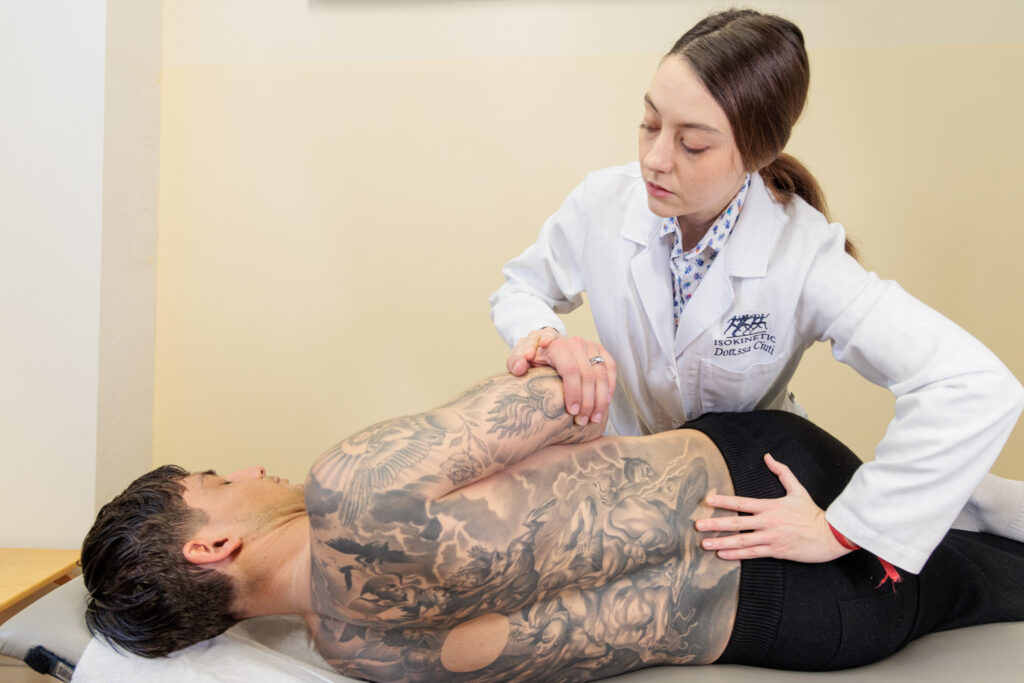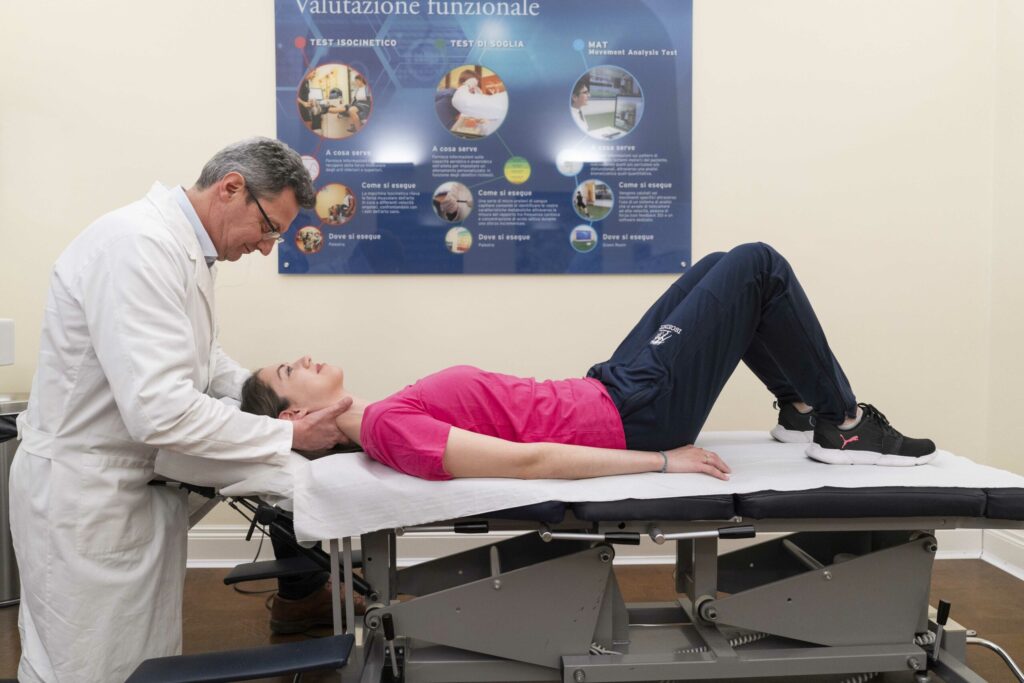Request information and/or book a visit
© 2012-2024 Isokinetic Medical Group Srl
P.Iva 03740671205 – Cap. Soc. Int. Vers. Euro 10.400 – Reg. Imp. n.03696800378 – R.E.A. n.309376

Chiropractic, a fundamental part of the Isokinetic approach, utilizes manipulation and targeted correction techniques on the spine and various peripheral joints (foot, knee, shoulder, jaw, etc.) with the aim of realigning them and reestablishing normal mobility.
The chiropractor employs manual techniques to help the body restore its freedom of movement and improve balance. The holistic nature of chiropractic combines the ability to relieve pain from injuries or musculoskeletal disorders with a focus on the individual’s overall mental and physical condition: a patient who resumes movement is not only physically healthier but also happier.


A common misconception is that chiropractic is only helpful for addressing back pain. In truth, working with a knowledgeable chiropractor can offer a variety of benefits that surpass merely addressing lower back issues.
A series of chiropractic sessions can improve the symptoms of:
Isokinetic has added chiropractic sessions to its personalised rehabilitation protocols to support overall motor health. This method aims to realign compensatory mechanisms that could affect areas of the musculoskeletal system, even those that are distant from the injured region or directly linked to the painful symptoms.
When undergoing rehabilitation after an injury, a large part of the initial focus is on the injured area itself. For instance, after reconstructing an anterior cruciate ligament, attention is directed towards managing post-surgical swelling in the knee and alleviating pain. However, the body continues to move and function during and will activate compensatory mechanisms that shift the load to other anatomical structures, such as the pelvis and back, to avoid putting stress on the knee. The chiropractor’s role is to observe these changes in load and restore proper mobility to prevent re-injury or the onset of issues like lower back pain or hip pain
In Isokinetic rehabilitation centers, patients are permitted to attend chiropractic sessions only after an initial evaluation by a physiatrist or sports medicine doctor. After an initial consultation and any necessary further tests (like X-rays or ultrasounds), a customised treatment plan is established, which may involve sessions with a chiropractor.
During the initial session, the chiropractor conducts a physical evaluation: through posture observation and ‘dynamic palpation’—a tactile examination of the spine and other joints during movement— the specialist identifies any irregularities that could influence or worsen the current issue.
The treatment may cause some discomfort if performed when the patient is in an acute phase, such as after a recent injury or muscle spasm. This discomfort typically subsides within a few hours after the session, and the pain associated with the manipulations generally lessens and often disappears within 2 to 3 sessions.
When dealing with asymptomatic stiffness or chronic pain, the treatment can be completely painless and even enjoyable. The procedure referred to as ‘maintenance’ is performed to evaluate and sustain mobility and flexibility; patients typically do not experience discomfort, but rather enjoy the benefits.
Quick and clear benefits in the affected region, enhanced overall mobility, and a satisfying feeling of psychological well-being are the reasons why patients opt for chiropractic sessions..
© 2012-2024 Isokinetic Medical Group Srl
P.Iva 03740671205 – Cap. Soc. Int. Vers. Euro 10.400 – Reg. Imp. n.03696800378 – R.E.A. n.309376

